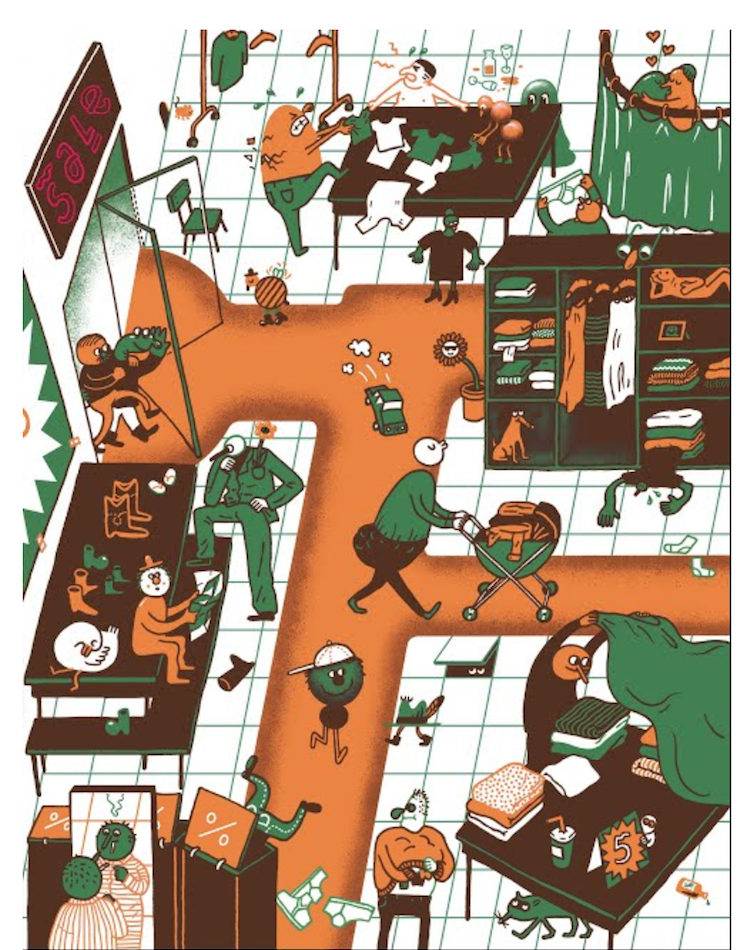We are all consumers and customers. However, there is a larger difference between what we consume and how we consume, and how it can have an effect on people in the production and supply chain of these goods we consume.
 We mainly see socially responsible products pushed to the forefront of our consciousness these days due to slick marketing campaigns and ads, pushed by both corporations as well as celebrities on how their product gives back to the communities which they gain their raw resources from.
We mainly see socially responsible products pushed to the forefront of our consciousness these days due to slick marketing campaigns and ads, pushed by both corporations as well as celebrities on how their product gives back to the communities which they gain their raw resources from.
The real question here is, does it really do that? Who’s benefiting here? Behind a slick marketing campaign is the need for us to feel good about what we are buying, especially after many journalists and undercover whistleblowers shed light on how the luxuries of modern consumerism are produced – in the sweatshops of china, with slave labour in Africa, and sometimes, child slave labour too.
Sometimes, the product of such methods also cause massive environmental devastation, not pollution, devastation. We may or may not see it, but who knew your bar of soap causes forest fires every year in Indonesia started by farmers for their crop of oil palm? What’s oil palm you ask? Well, nothing much, except that it’s a major component in making many kinds of soap, dye, and luxury and everyday bathroom products for both genders.
Here’s how you can do your part to combat worldwide exploitative labour and consumerism destroying communities and livelihoods.
1. Check The Source
A product needs to be made from raw materials that have to be refined, processed, and shipped to your point of sale (POS). Now, in between the mining and processing of such raw material, many things happen.
We first need to look at where the raw materials come from. Generally speaking, it is neither practical nor feasible to trace back every raw ingredient in your shampoo to its source, however, a quick Google search will give you the locations and operational areas of the main ingredients of your product’s manufacturer. Sometimes, the manufacturer deals with its supplier who operates independently, however, you can still do a little research and find out.
A quick example is knowing where your paper comes from – is it from a sustainable timber and wood pulp source? or is it illegally mined? Some countries as a whole have very bad reputations in regulating their own resource extraction industries, it is best to steer clear of companies who operate in such countries.
2. Corporate Accountability
This is quite straightforward. Some corporations are very bad at telling the truth, resorting to bribery, lies, and intimidation as well as hushed deals to get as much wealth as possible from both consumer and communities that thy exploit.
Such businesses should be shunned, and their products avoided at all cost.
These businesses sometimes, in a bid to hide their bad rep, undergo a rebranding exercise and sell their products under different subsidiary brands, making it easy to hide their bad reputation from consumers like yourself.
This is especially prevalent these days, and can also be countered with a quick google search.
An exception however – should apply. Sometimes, said companies with a bad reputation get bought over, or taken over by a more reputable corporation and overhauled. In that case, it should be prudent to do your research on whether the company has adopted sustainable and responsible practices before buying their products again.
3. Check Production Partners
Modern day manufacturers very, rarely act alone. Such is the case that a company needs to harvest, say, oil palm in Indonesia for its soap for example; it works with a business partner in Indonesia to supply the local labour, machinery as well as raw material, while it provides the financing.
However, the local labour may be exploitative, and the harvest and planting methods may be damaging as well as polluting to the environment and neighbouring countries. In extreme cases, the manufacturer is unaware of such unsustainable practices being used by its partners as well, and is only notified upon a case being brought to court by watchdog agencies or whistleblowers leaking news.
4. Consider Materials Used
Before you actually buy the product, have you considered the impact it will have during and after its use?
Is it a one off product? Do you need it? Is the packaging/container re-usable, recyclable, or is it hard to decompose and recycle? These factors should come into play when you are considering buying or even getting the item for free.
For this reason, plastic bottles, styrofoam and other non-biodegradable materials should be sparsely purchased, or never, if possible.
5. Consider Impact of Product
Consider the product from a consumer standpoint, and the attitude it generates in society. is the product actually needed? Or is it just another whim that the market demands, but we don’t actually need?
Going by the saying, “if you don’t need it, don’t get it” is a good way to go. Needing and wanting are two different things altogether. A consumerist lifestyle not only pollutes, but also contributes to your general decline in a standard of living, as one-use items tend to be lower in quality.
Buying more and more of these one-time use items with short product life cycles only drains your finances as well as encouraging manufacturers to supply more of them, in a vicious cycle. Be aware of what you buy!
With all these points in mind, we hope you can become a more responsible consumer!







 We mainly see socially responsible products pushed to the forefront of our consciousness these days due to slick marketing campaigns and ads, pushed by both corporations as well as celebrities on how their product gives back to the communities which they gain their raw resources from.
We mainly see socially responsible products pushed to the forefront of our consciousness these days due to slick marketing campaigns and ads, pushed by both corporations as well as celebrities on how their product gives back to the communities which they gain their raw resources from.

 Yet, all these need not be started by companies. Nor governments. These can be started by you.
Yet, all these need not be started by companies. Nor governments. These can be started by you.